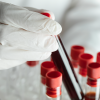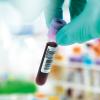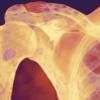Anas Nasir, a Specialist Biomedical Scientist in haematology and blood transfusion, puts the future of blood films under the microscope

Advancements in technology and other techniques are often conflated with morphology being made redundant. Analysing and reporting blood films is difficult, labour intensive and requires extensive training and experience. Morphological examination may highlight issues with automated analysers and also show things that are currently not detectable by the machines. This article will discuss, with a few examples, why it may be a little early to pronounce the death of blood films.
Platelet clumping
Platelets are integral components of haemostasis, clot formation and they help to stop bleeding. It is, therefore, imperative that accurate platelet counts are provided, as patients have different targets that would determine their need for a transfusion. In a small percentage of patients, platelets clump together due to the commonly used anticoagulant ethylenediaminetetraacetic acid (EDTA) in full blood count samples, resulting in a falsely reduced platelet count or pseudothrombocytopaenia.
This agglutination of platelets is an in vitro phenomenon caused by IgG/IgM autoantibodies directed against platelet surface glycoproteins. EDTA exposes epitopes by inducing a conformational change in GPIIb/IIIa and subsequently causes the agglutination to occur. Alternative anticoagulants, such as sodium citrate or heparin, can be used to overcome this issue. Platelet clumping is significant as patients may be subjected to unnecessary platelet transfusions if falsely low counts are reported.
Platelet satellitism
First described by Field and Macleod in 1963 as an in vitro phenomenon seen in peripheral blood films, platelet satellitism is a rare occurrence seen only in blood taken containing EDTA and is absent in other anticoagulants. It is thought that IgG antibodies are formed in the presence of EDTA and directed against the GPII/IIIa complex on the membranes of platelets and the Fc gamma receptor on neutrophils. Coated platelets form a rosette cluster around segmented neutrophils. Platelet satellitism has clinical implications as well as it may result in spurious thrombocytopaenia or pseudothrombocytopaenia, which would require further investigations and interventions. Though satellitism is usually associated with neutrophils, there have also been reported cases of adherence of platelets to lymphocytes and even basophils.
“Blood films are still an integral diagnostic tool, which should be used alongside the patient’s clinical history and blood count results”
To read the full article please click here.




